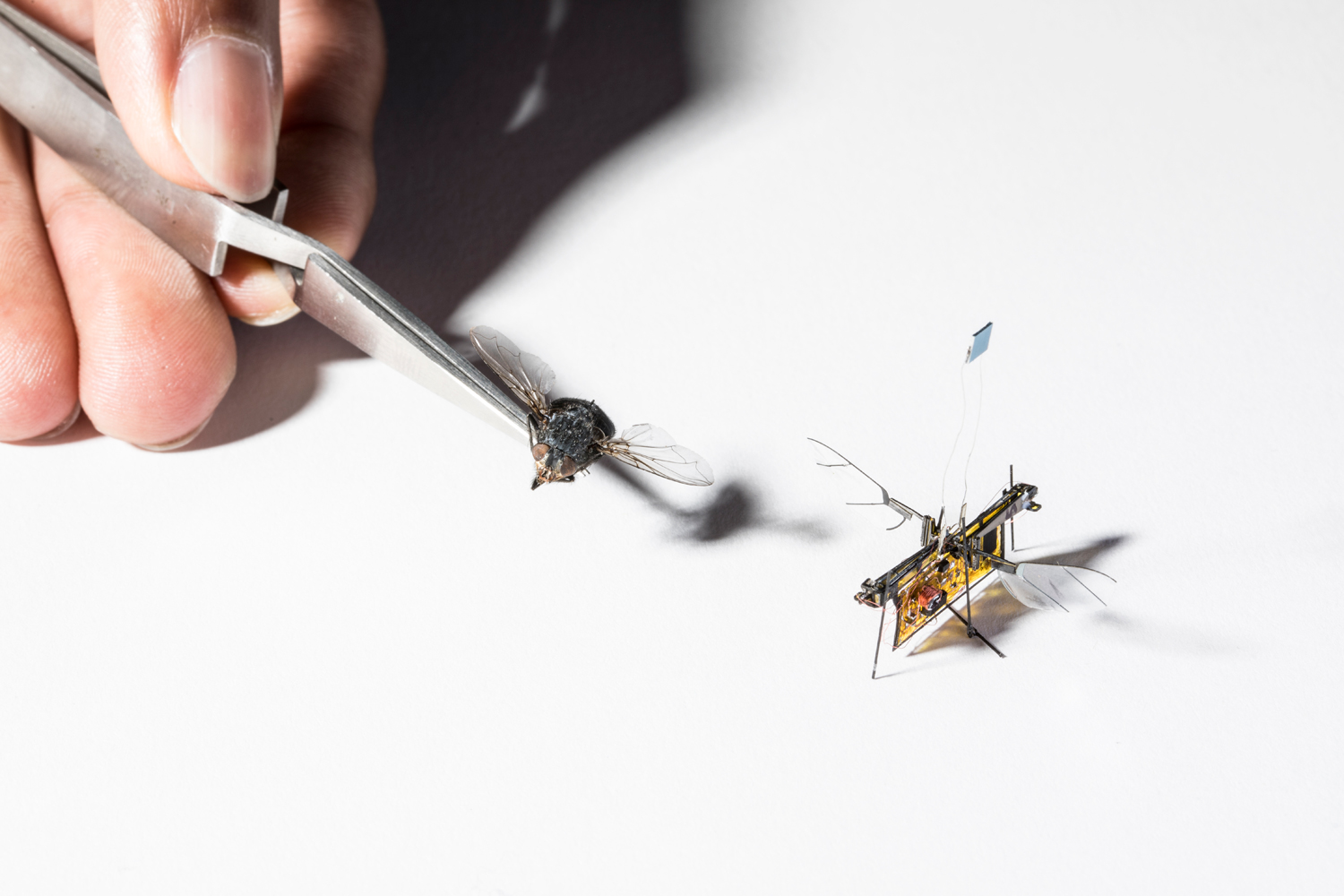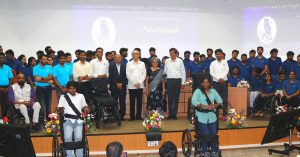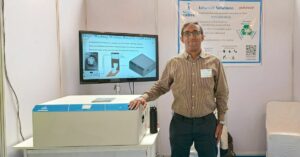3 Indians Play Key Role in Building World’s 1st Wireless Insect-Sized Drone!
Up until now, robotic insects have been developed, but they were never truly wireless as they were tethered with wires for control and power supply. But RoboFly is unique in its own way!

Imagine, there is a gas leak in a factory. You are the lead engineer, and you can’t risk anyone to manually check the leak, as the gas may kill a person. So what do you do?
Well, assuming we are in the future, you would be able to deploy an army of wireless RoboFly that will sniff out the leak and report the leakage point.
RoboFly, as of now, is a robotic insect prototype developed by The University of Washington team consisting of Allen School Professor Shyam Gollakota, Mechanical Engineering Professor Sawyer Fuller, and PhD students Vikram Iyer and Yogesh Chukewad. PhD scholar Johannes James is the lead author.
The insect-sized tech weighs more than a toothpick and is powered by a laser beam. It is truly the world’s first wireless flying robotic insect.

Co-author Sawyer Fuller told UW news, “Before now, the concept of wireless insect-sized flying robots was science fiction. Would we ever be able to make them work without needing a wire? Our new wireless RoboFly shows they’re much closer to real life.”
Up until now, robo insects have been developed, just ask co-author Fuller, who previously developed the RoboBee, but they were tethered with wires for control and power supply. Making it wireless, there is another challenge– the flapping of the wings, which needs constant power and consumes more of the same.
So the research team decided to use an invisible laser beam to power their robot. They pointed it at a photovoltaic cell, that was attached above the RoboFly, which converts the laser light into electricity.
“It was the most efficient way to quickly transmit a lot of power to RoboFly without adding much weight,” said co-author Shyam Gollakota, who completed his BTech from IIT Madras.
The circuit of the robot is so built that the current developed from the photovoltaic cell is boosted with a step-up voltage converter for the flapping of the wings. And to control it, they gave it a microcontroller.
“The microcontroller acts like a real fly’s brain telling wing muscles when to fire,” said co-author Vikram Iyer, adding “On RoboFly, it tells the wings things like ‘flap hard now’ or ‘don’t flap.’”
For now, the RoboFly can only take off and land, but its possibilities are endless. With future versions, consisting of batteries that can even be powered by radio signals.
“If these robots can make it easy to find leaks, they will be much more likely to be patched up, which will reduce greenhouse emissions. This is inspired by real flies, which are really good at flying around, looking for smelly things. So we think this is a good application for our RoboFly,” said Fuller.
Chukewad, a native of Nanded in Maharashtra, told Financial Express, that this research focuses on designing and fabricating insect-scale robots and on controlling their flight with the help of onboard and off-board sensors. “We also intend to develop abilities to navigate difficult environments, such as moving along the ground,”
The team presented its findings on May 23 at the International Conference on Robotics and Automation in Brisbane, Australia.

The application is interminable, from surveying crop growths to sniffing out gas leaks, this tiny robotic insect, as put but the University of Washington News “might be one small flap for a robot, but it’s one giant leap for robot-kind”.
(Edited by Shruti Singhal)
Hey, you may also like: India’s First Cruise Service from Mumbai to Goa Starts: What You Need to Know
Like this story? Or have something to share?
Write to us: [email protected]
Connect with us on Facebook and Twitter.
NEW: Click here to get positive news on WhatsApp!
This story made me
- 97
- 121
- 89
- 167
Tell Us More
We bring stories straight from the heart of India, to inspire millions and create a wave of impact. Our positive movement is growing bigger everyday, and we would love for you to join it.
Please contribute whatever you can, every little penny helps our team in bringing you more stories that support dreams and spread hope.



















